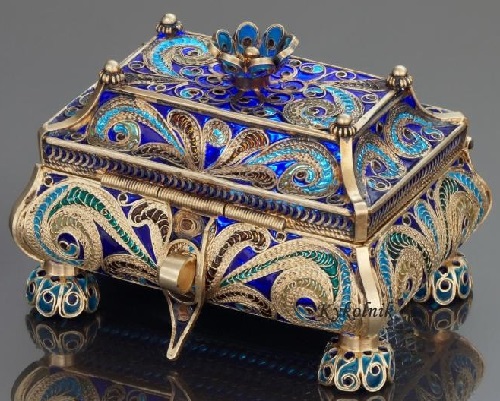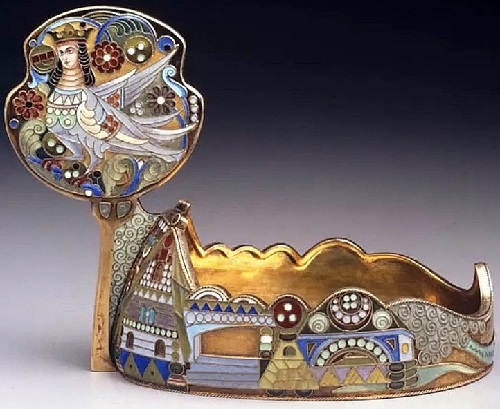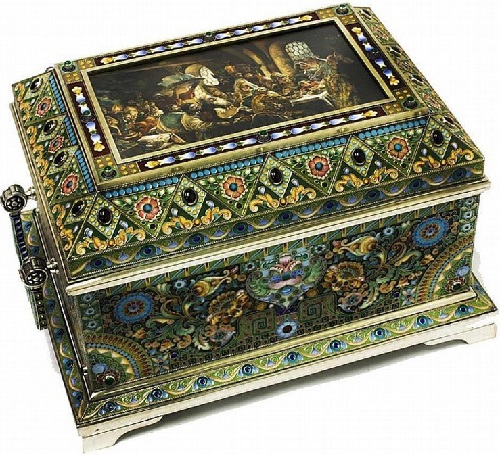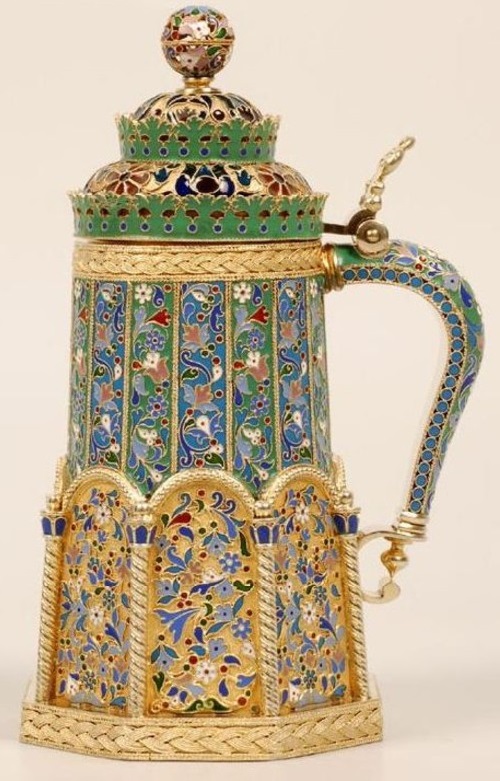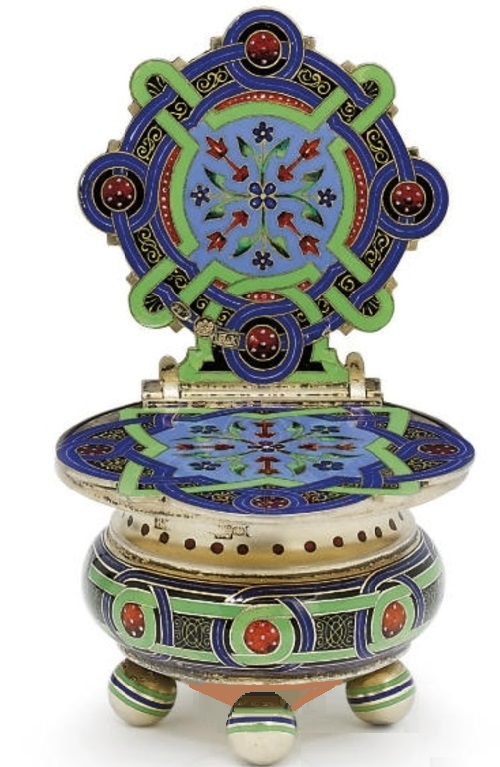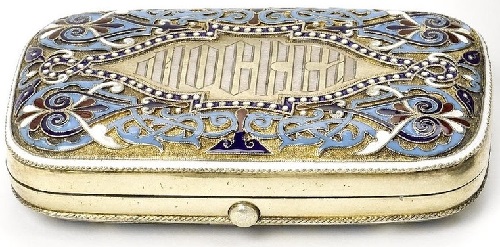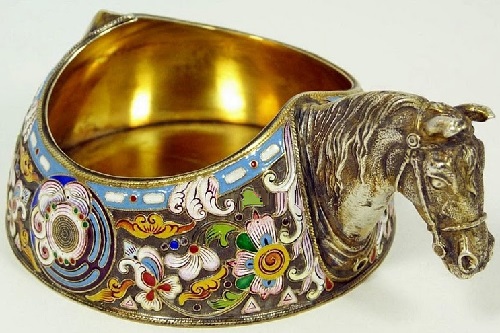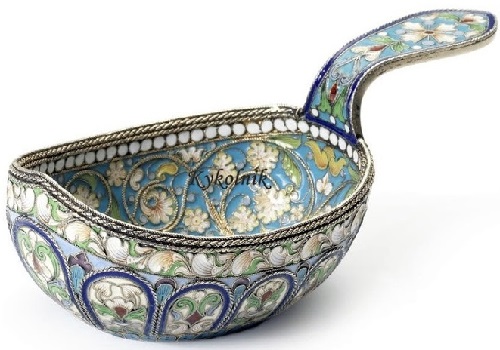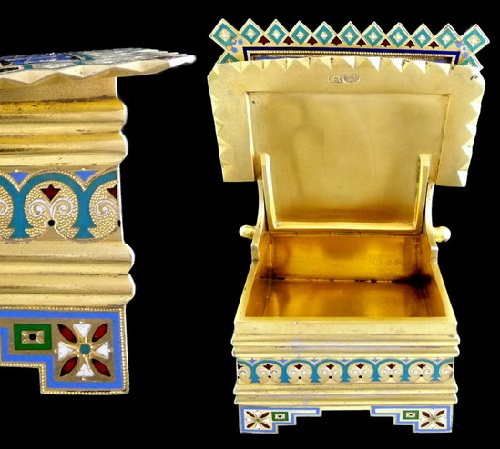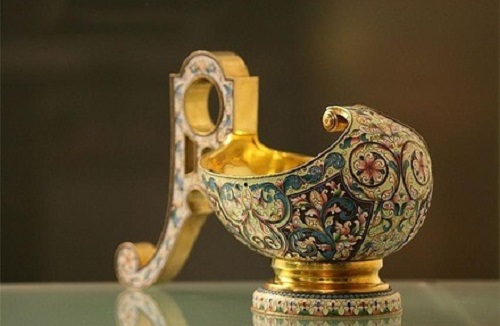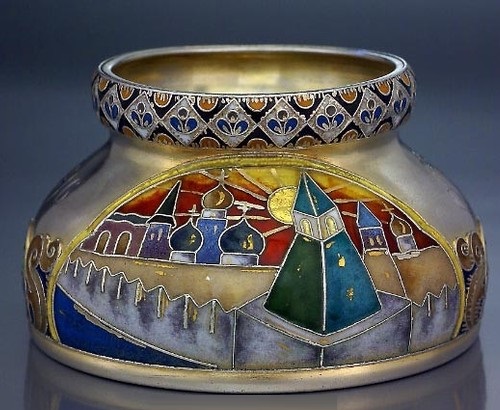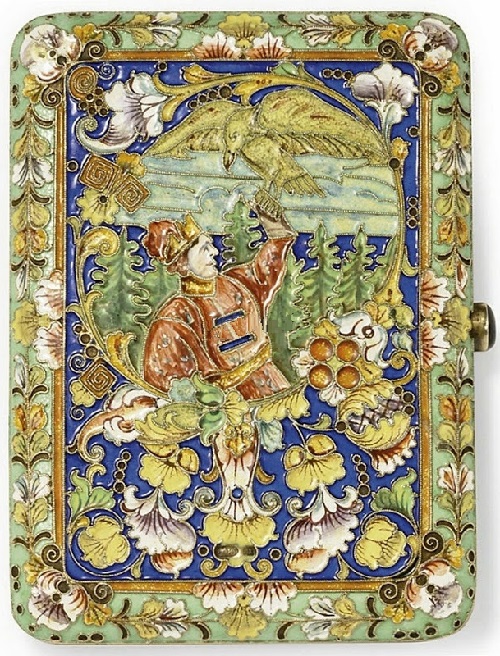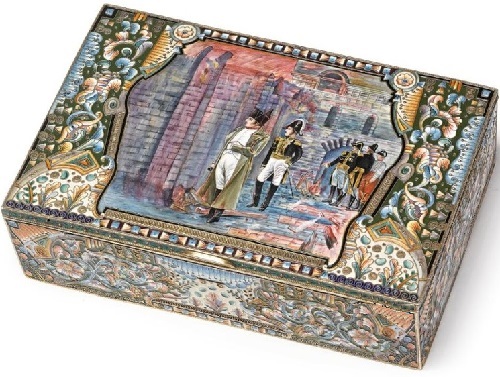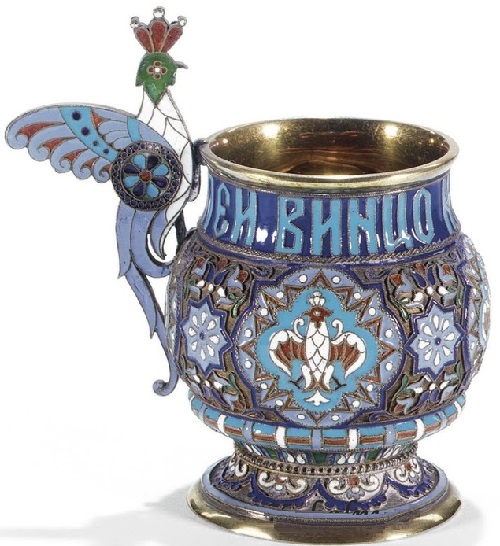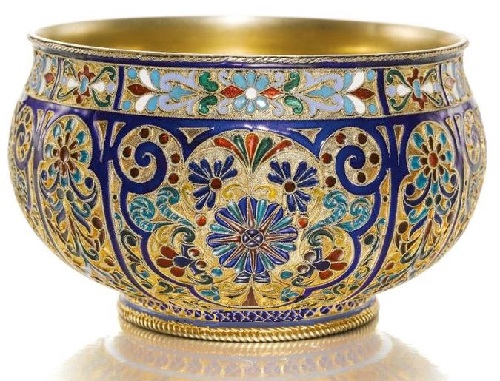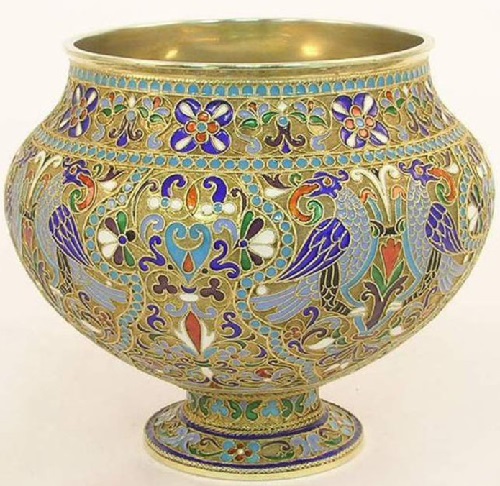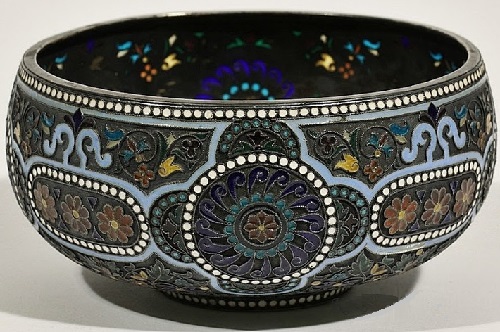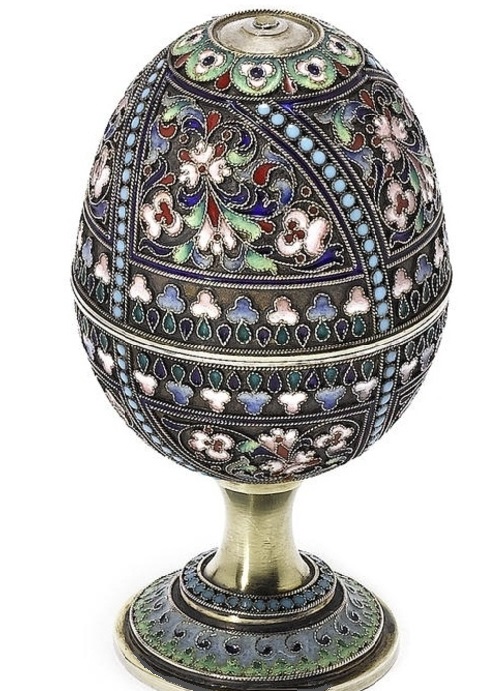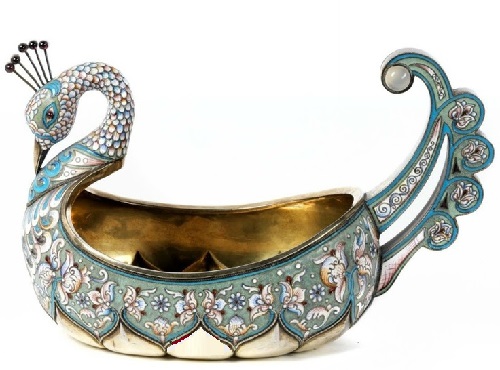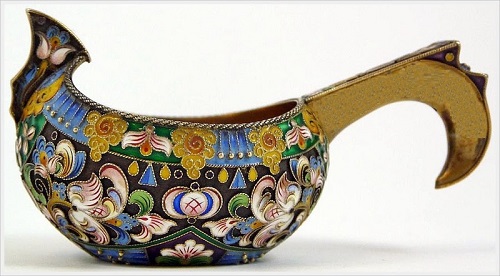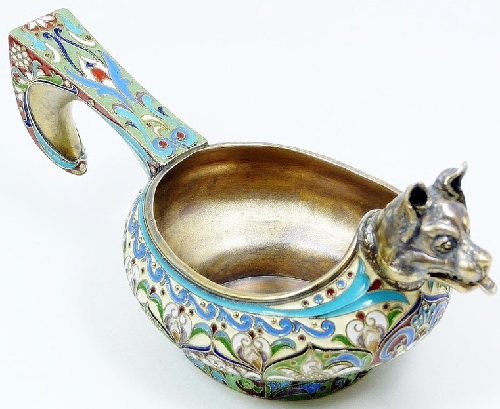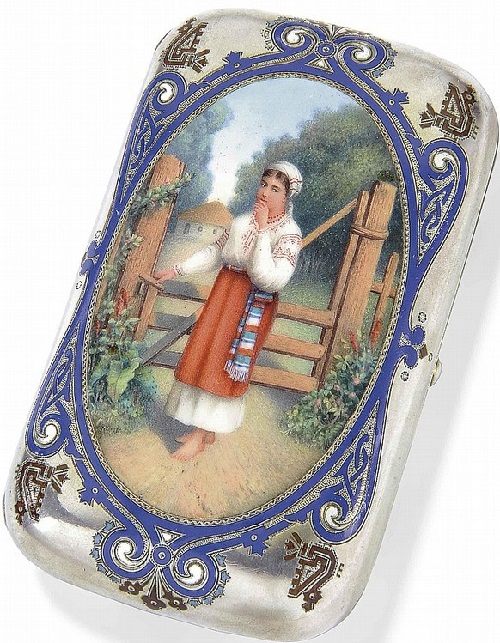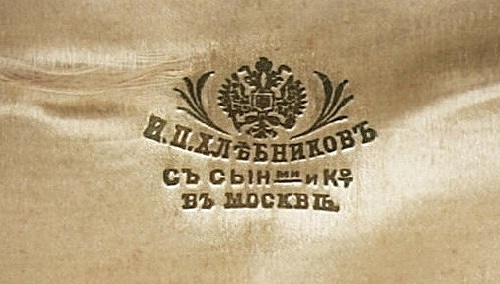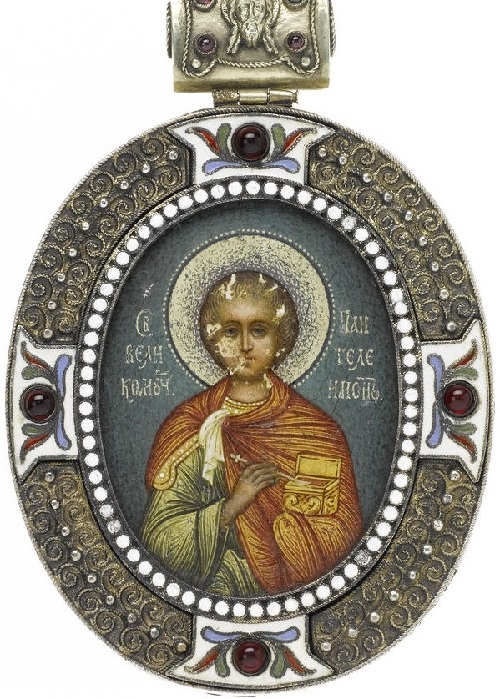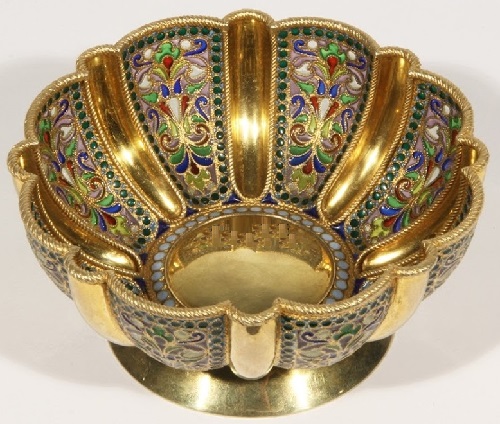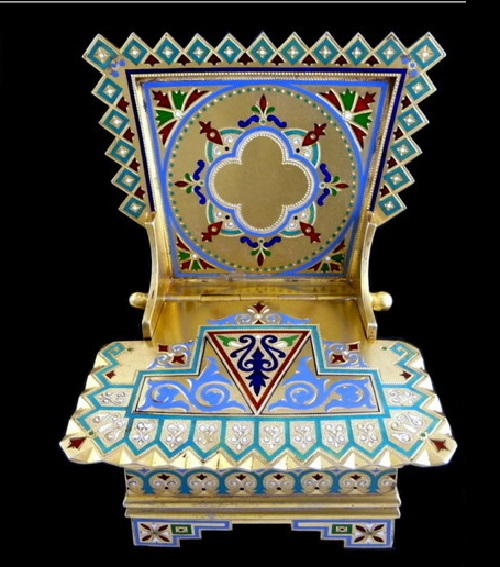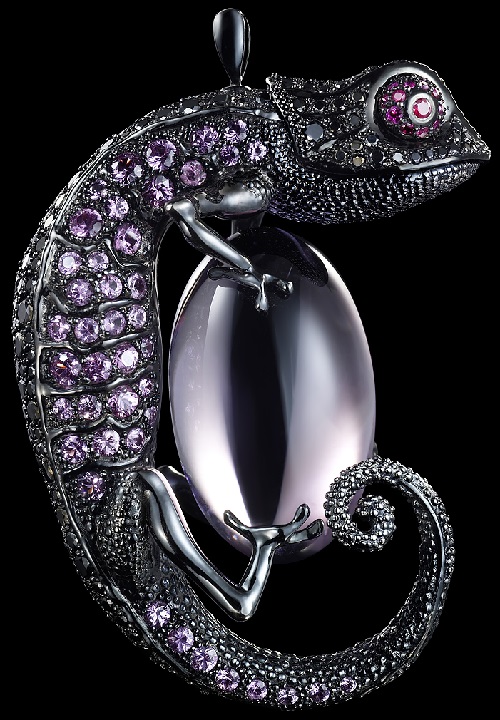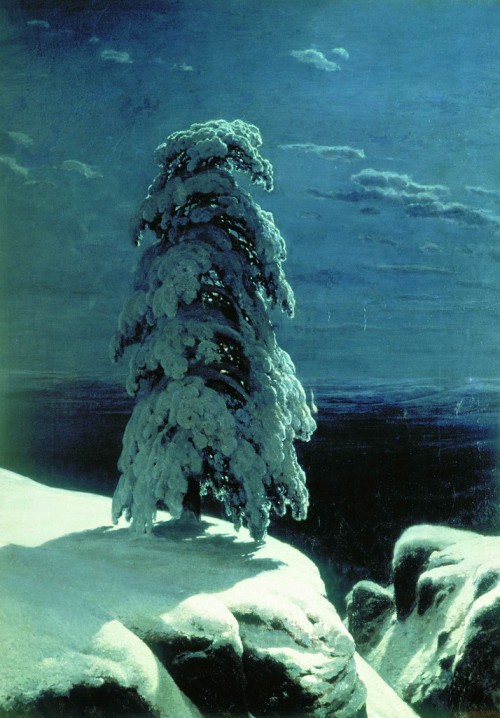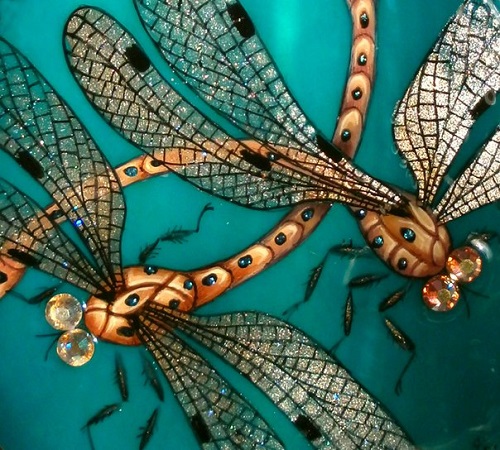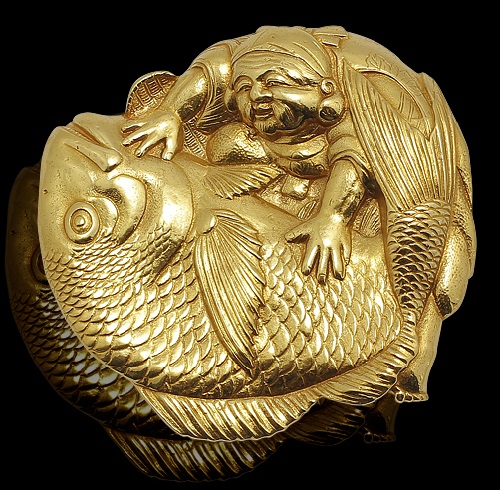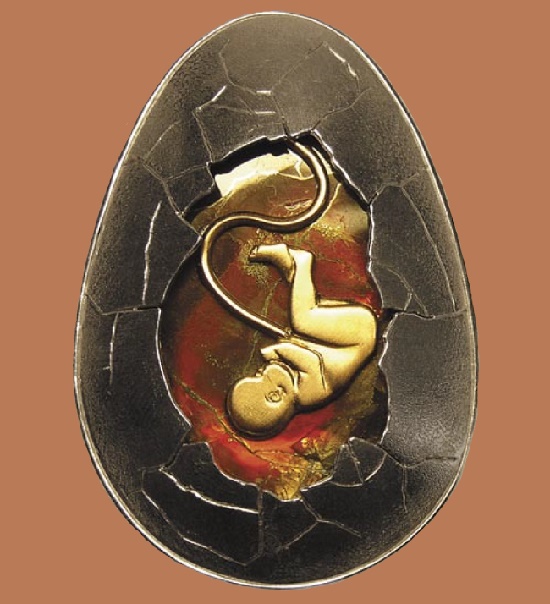Russian jeweler Ivan Khlebnikov
Russian jeweler Ivan Khlebnikov (1819 – 1881) worked in St. Petersburg until 1867, and in 1871 founded the company in Moscow. Khlebnikov’s Factory of diamond, gold and silver jewelry was well equipped with the latest technology for all kinds of work, its products were considered one of the best in Russia. The factory of Khlebnikov had a special art school, there were special workshops. Socioeconomic changes taking place in Russian life in the second half of XIX century could not but reflected the motifs of jewelry. There are stories on the theme of peasant life, which is displayed in a highly glamorized, and far from the truth. Made by small groups sculptures on the theme of peasant life, cast in silver, sometimes fortified on stone pedestals, served as ornaments for a desk or a table.
For the first time the name of court supplier Khlebnikov became known at the World Exhibition in Vienna in 1873, where by the serious consideration of experts he earned two medals. Ivan Khlebnikov demonstrated well-matched and a diverse collection of enamel products in the Russian style.
Surprised everyone with unusual shapes – samovar tea set. Samovar was on “cock legs” and handles as cock heads. Among other works was a massive wine bowl with six mugs decorated with with enamel and precious stones, with relief images of Dmitry Donskoy. As with all the major firms of that time, I. Khlebnikov was famous for his relief work, chamber silver sculpture on folk themes.
Themes of his stories became not only Russian history but also literary works. At an exhibition in Paris in 1878 the company introduced low-relief images, among them – the cover plate with a scene from the life of Ivan the Terrible, a dish with a winter rural landscape; in 1882 – the plate with the image of St. Sergius of Radonezh, the feast of Lermontov poem “The Song of the Merchant Kalashnikov”.
Great fame brought to I. Khlebnikov enamel art. The collection of the State Historical Museum stores 1870s set for wine, made in the form of a decanter-cock-chickens and goblets decorated with enamel. Originality of design, favorite folk motif, and also close to the folk art forms of fancy, colorful palette with perfect technique of execution make it a unique monument of Russian style.
Khlebnikov firm worked in all kinds of enamel, and the press has always noted the richness and originality of his work. The company played a prominent role and has made an enormous contribution to the jewelry. Its masters repeatedly awarded the honor to fulfill orders for the imperial family, then the company itself was awarded “Supplier of His Imperial Majesty.”
In 1888, the sons of Ivan Khlebnikov – Mikhail, Nikolai, and Alexey, as well as merchant of 1st guild V.N. Suvorov formed a corporation under the name “Association of production of silver, gold and jewelry IP Khlebnikov sons and K °”. June 24, 1917 the factory was closed. Company shares were donated by one of Khlebnikov bequest to Moscow county Zemstvo.
In 1918, based on the former factory of Khlebnikov in Moscow began working platinum plant, on which were mainly produced all kinds of products for the chemical and electrochemical industry and research laboratories, and in addition, a small amount of silver jewelry, mostly dining items – spoons, forks, cup holders.
